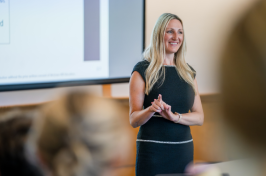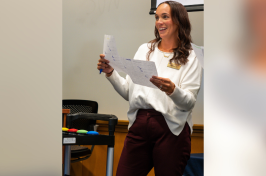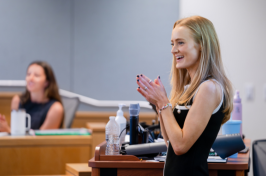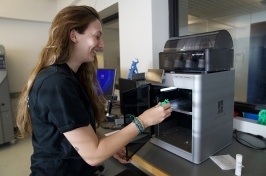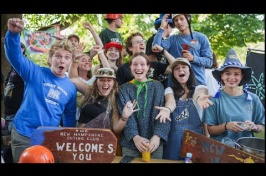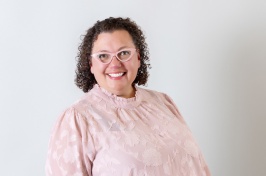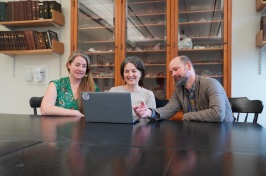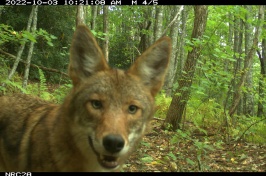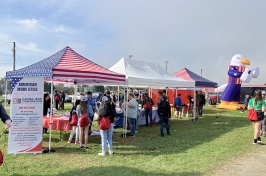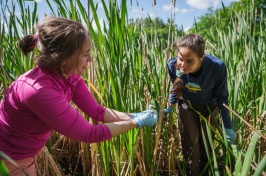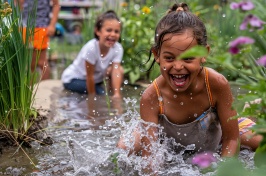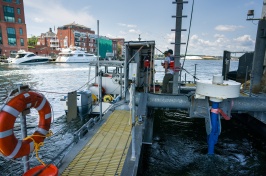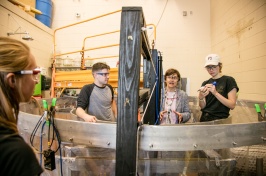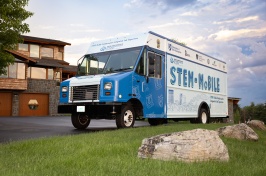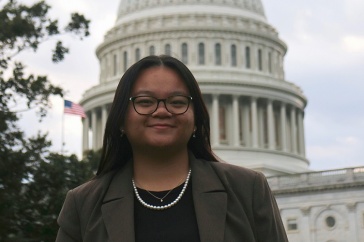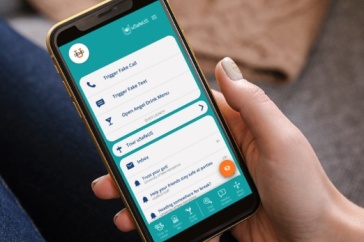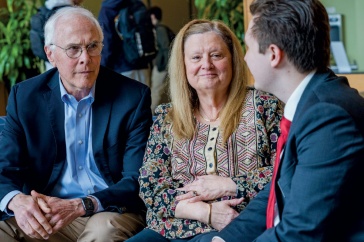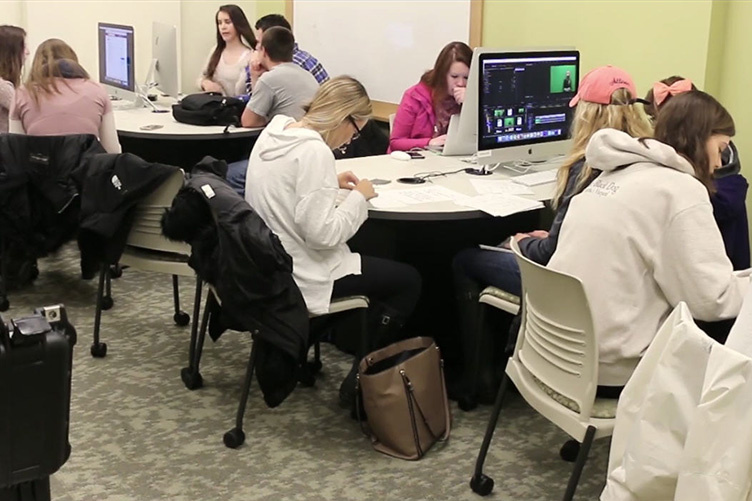
Communication students utilizing the new CMN Media Lab in Horton Hall.
In their final projects for their multimedia communication class, lecturer Michael Soha’s students explored feminist theory, the 2016 Presidential Primary, anime and online identity, all based on research they completed for other communication courses. Thanks to multimedia software and professional camera equipment found in the department of communication’s new CMN Media Lab, students can now bring their research to life in videos that incorporate news clips, interviews, photos, animation and their own voices.
For Kaitlyn Lawson ‘19, the course provided an opportunity to build upon research she completed for professor Nora Draper’s online identity course. The class and the lab gave her the tools she needed to weave together testimonials, statistics and interviews to produce Two Dimensional Love in a Three Dimensional World. In her video, she uses animation to cite statistics about the online dating app Tinder, creatively illustrating the pros and cons of using an online identity to find true love.
Watch a student-created introduction to the CMN Media Lab.
“The class shows you how to develop your creative skills and then go into the world and use those skills in scholarly ways,” she says. “You learn how to show your argument and present statistics through video. It’s more dynamic for students and teachers to watch and learn about.”
Soha teaches multimedia communication and manages the CMN Media Lab, a high-tech space for media production and learning in the lower level of Horton that serves as a hub for merging communication scholarship with multimedia creativity. The class is a “melding of production and scholarship,” Soha says. He adds that the class is not designed to train aspiring filmmakers but aims to help students learn the practical skills they need to communicate through multimedia.
“In media studies, we’re often having students write papers about topics like ‘gender representation in cinema’ or ‘news framing of war coverage,’ but it can sometimes feel a bit limiting or frustrating to be dependent on only writing to analyze such a visual topic,” Soha says. “For example, writing about these same topics, and then creating a video essay or podcast based on that written narrative — while also including clips of the films or news casts being analyzed — has exciting potential to boost both student engagement with scholarship while also providing an effective way to communicate ideas about visual culture.”
Soha adds that taking popular forms of multimedia and exploring their use for scholarly expression is an innovative form of scholarly work. In the last two semesters that the media lab has been open, he has seen a lot of exciting projects and energy from both students and faculty, he says.
“We’re about to launch a brand new student-faculty group called CAMRA (Collective for Advancing Multimodal Research Arts), devoted to promoting multimedia-based scholarship; and for the first time we’re accepting student multimedia-based scholarly projects for review and publication in Comm-Entary, our student journal, which is launching a new digital presence,” Soha says. “And on May 15, we’re hosting our first film festival to showcase student multimedia scholarship, which we expect to hold each year.”
These YouTube playlists include final projects from recent Multimedia Communication courses.
Multimedia Communication Final Projects – Fall 2017
Multimedia Communication Final Projects – Spring 2017
The CMN Lab includes eight iMac Pro editing stations with the full Adobe Creative Cloud suite, a small sound-proof recording studio and interview space and a range of professional quality equipment for shooting photos and video and recording audio in the field. Students can also check out equipment over a three-day loan period. In the lab space, students can plug in to monitors, share their work on a larger screen at the front of the class and access production software.
Associate professor Jennifer Borda, the department's chair, says that for at least a decade, the communication faculty has wanted a production facility that students and faculty could use to teach courses and complete projects. Although the communication major in Durham is not a production-oriented program, Borda says that it does not diminish the usefulness of a facility where students can learn hands-on techniques for video and audio production — particularly because new media is central to the professional opportunities students will encounter when they graduate. In addition to multimedia communication, the lab serves as a home to the short documentary production course. Other courses, such as media ethics and digital rhetoric, use the lab space. In Borda’s course on social protest: rhetoric and resistance, students submitted digital films on topics such as food activism, the NFL and the kneeling controversy and historical biographies on various activists using the lab space and equipment.
The media lab project is part of the university’s ongoing renovation of Horton Hall. Operating support is provided by the College of Liberal Arts. A generous alumni gift this year made it possible for the lab to buy two new cameras and more tripods, Borda says.
Kyra Shumway ‘20, a communication major who also works part-time at the lab, is excited to be taking classes that satisfy the media practices option in the major. Although she says isn’t yet clear on what her career path might be, she is interested in video editing, thanks to her exposure to the tools she’s used in the course.
“It’s a different way of expressing ideas,” Shumway says. “I am usually shy and don’t speak up, but when I am doing (an interview) in a video form, I find I can be more creative and expressive and have the confidence to put my ideas out there.”
You can make a difference for UNH students with opportunities like the CMN Media Lab.
-
Written By:
Krysten Godfrey Maddocks '96 | College of Liberal Arts | krysten.godfreymaddocks@unh.edu







